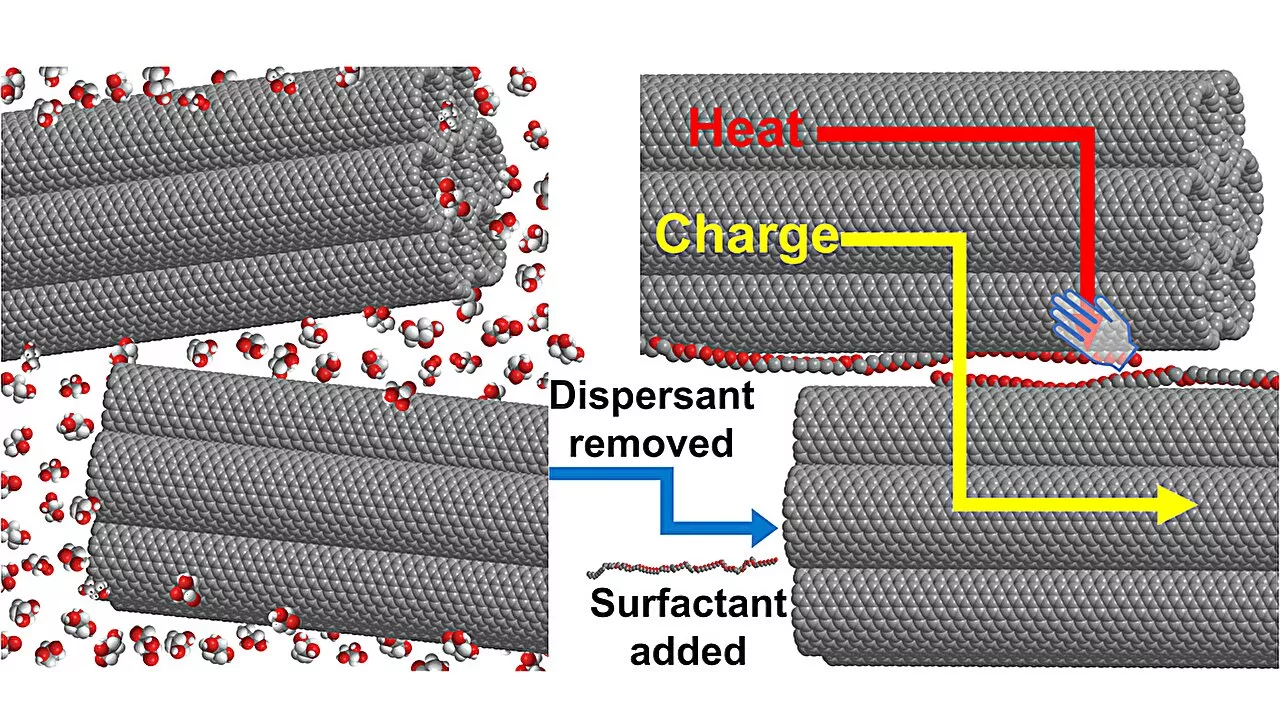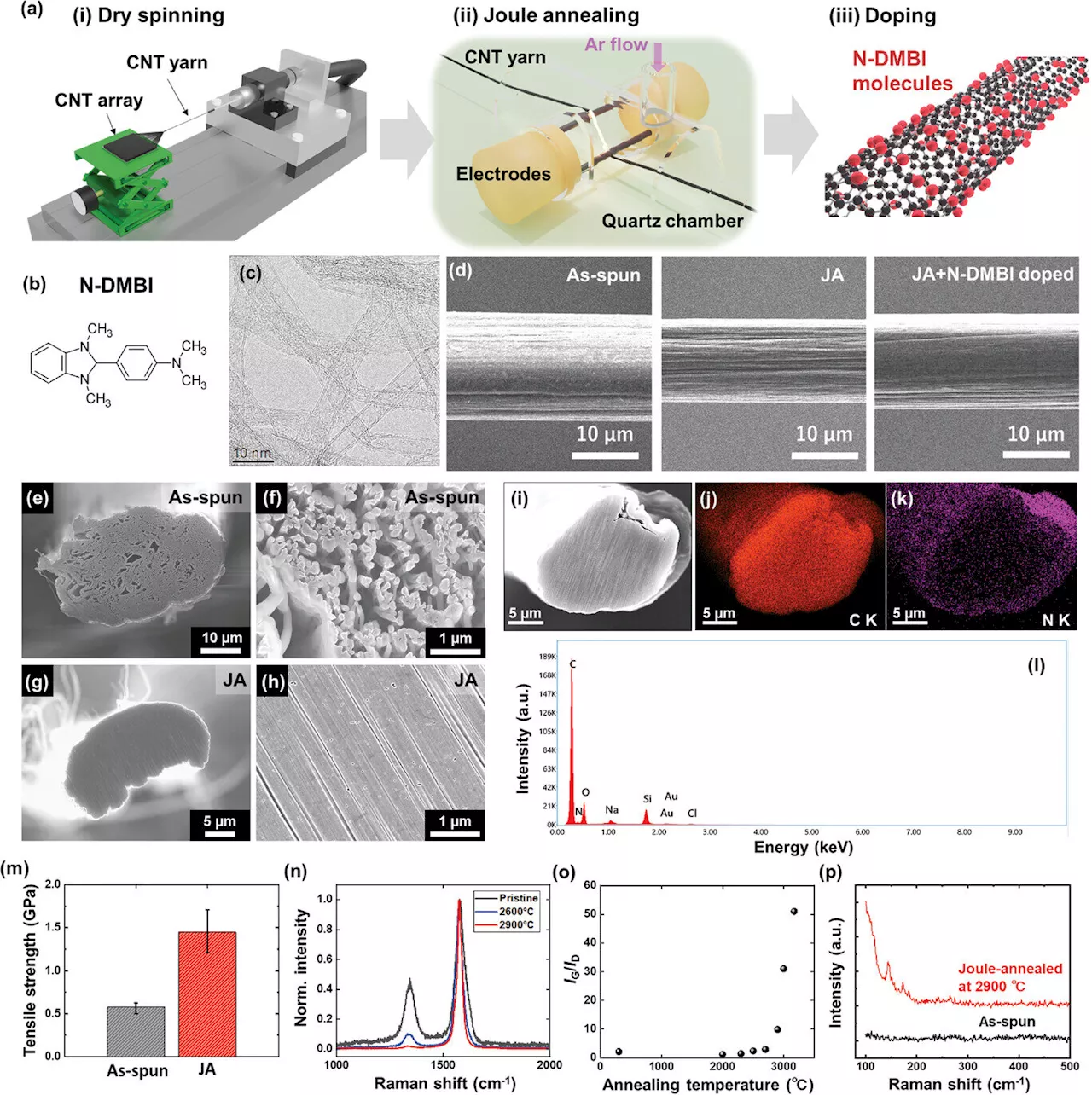Electron transfer (ET) is a process in which an electron is transferred from one atom or molecule to another. ET is fundamental to electrochemical reactions with applications in many fields. Nanoscale ET, which involves the transfer of electrons in the range of 1–100 nanometers in solids, is fundamental to the design of multifunctional materials.
Towards next-gen functional materials: Nanotube crystal enables direct observation of electron transfer in solids retrieved 4 June 2024 from https://phys.org/news/2024-06-gen-functional-materials-nanotube-crystal.html
This document is subject to copyright. Apart from any fair dealing for the purpose of private study or research, no part may be reproduced without the written permission. The content is provided for information purposes only.Use this form if you have come across a typo, inaccuracy or would like to send an edit request for the content on this page. For general inquiries, please use ourThank you for taking time to provide your feedback to the editors.
Your feedback is important to us. However, we do not guarantee individual replies due to the high volume of messages.to let the recipient know who sent the email. Neither your address nor the recipient's address will be used for any other purpose. The information you enter will appear in your e-mail message and is not retained by Phys.org in any form.Get weekly and/or daily updates delivered to your inbox.
Physics News Science News Technology News Physics Materials Nanotech Technology Science
United States Latest News, United States Headlines
Similar News:You can also read news stories similar to this one that we have collected from other news sources.
 Powering wearable devices with high-performing carbon nanotube yarnsWith the growth of the Internet of Things, sustainable solutions for powering wireless sensors and devices are considered important. Thermoelectric generators, for example, which have the ability to convert waste heat into electricity, can offer a sustainable solution. Researchers around the world have been working on such solutions.
Powering wearable devices with high-performing carbon nanotube yarnsWith the growth of the Internet of Things, sustainable solutions for powering wireless sensors and devices are considered important. Thermoelectric generators, for example, which have the ability to convert waste heat into electricity, can offer a sustainable solution. Researchers around the world have been working on such solutions.
Read more »
 Novel carbon nanotube yarns can generate electricity from waste heatIn line with global efforts towards sustainability, the development of energy harvesting technologies has become a top research priority. Although renewable energy sources like wind and solar power have recently taken the spotlight, waste heat also stands as a largely untapped source of energy.
Novel carbon nanotube yarns can generate electricity from waste heatIn line with global efforts towards sustainability, the development of energy harvesting technologies has become a top research priority. Although renewable energy sources like wind and solar power have recently taken the spotlight, waste heat also stands as a largely untapped source of energy.
Read more »
![]() Groundbreaking Images Reveal the Human Brain at Nanoscale ResolutionNew images show the human brain in ways it has never been seen before. AI has reconstructed thousands of images into 1.4 petabytes of data.
Groundbreaking Images Reveal the Human Brain at Nanoscale ResolutionNew images show the human brain in ways it has never been seen before. AI has reconstructed thousands of images into 1.4 petabytes of data.
Read more »
 Nanoscale spin waves can boost energy-efficient quantum computing for AIThe new method, developed by researchers from Lancaster University and Radboud University Nijmegen, could lead to faster, cooler, and more environmentally friendly computers and data storage systems, which could benefit AI.
Nanoscale spin waves can boost energy-efficient quantum computing for AIThe new method, developed by researchers from Lancaster University and Radboud University Nijmegen, could lead to faster, cooler, and more environmentally friendly computers and data storage systems, which could benefit AI.
Read more »
 Nanoscale engineering brings light-twisting materials to more extreme settingsImaging the hot turbulence of aircraft propulsion systems may now be possible with sturdy sheets of composite materials that twist light beams, according to research led by the University of Michigan and Air Force Research Laboratory.
Nanoscale engineering brings light-twisting materials to more extreme settingsImaging the hot turbulence of aircraft propulsion systems may now be possible with sturdy sheets of composite materials that twist light beams, according to research led by the University of Michigan and Air Force Research Laboratory.
Read more »
 Nanoscale Discovery Offers a New, Energy-Efficient Approach to Quantum ComputingScience, Space and Technology News 2024
Nanoscale Discovery Offers a New, Energy-Efficient Approach to Quantum ComputingScience, Space and Technology News 2024
Read more »
